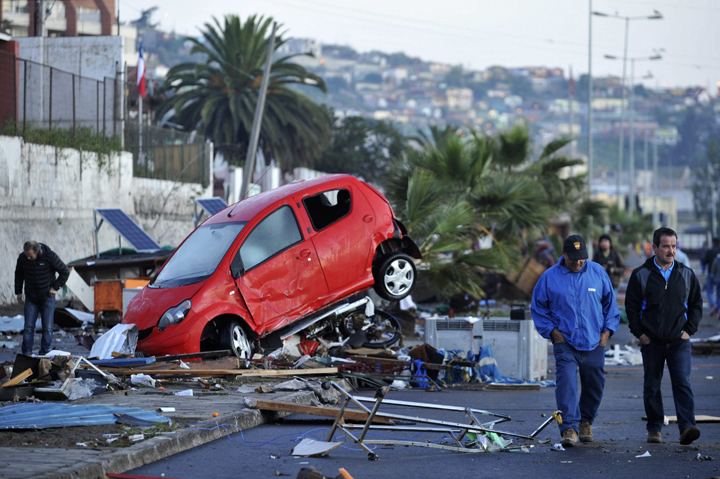The magnitude 8.3 earthquake that rocked Chile early Thursday morning could have been far, far worse.

A earthquake that large could have killed hundreds if not thousands. Fortunately, there were only eight people killed, though millions were evacuated.
Chile lies in one of the most earthquake-prone zones in the world along two plate boundaries. The South American plate moves over the Nazca plate. That movement — of about 50 mm a year — causes strain, and once it reaches a threshold, that energy is released as an earthquake.
VIDEO GALLERY: Chile’s magnitude 8.3 earthquake
The most powerful earthquake ever recorded shook Chile in 1960. Measuring an incredible 9.5, it killed 1,655 people, injured two million and caused $550 million damage. The earthquake also caused damage in Hawaii, Japan, the Philippines and the west coast of the United States.
In 2010, a magnitude 8.8 rocked the country, with a tsunami that killed more than 500 people. Over the years, hundreds of earthquakes, ranging from the small to the significant (magnitude 6 or higher) have rattled the country with a population of 17 million.
READ MORE: New report estimates Metro Vancouver earthquake could kill 10,000
It’s that familiarity with earthquakes that has made Chile one of the most earthquake prepared countries in the world.
Following the 2010 earthquake, Chile implemented a new warning system that alerted residents by telephone, computers and televisions in real time.
In 2014, when a magnitude 8.2 struck the nation, there were far fewer deaths — only five, four of which were due to heart attacks.
“It is true that preparedness and risk reduction in Chile is ahead of that in much of the world, and that makes a difference,” Susan Hough, a geophysicist with the U.S. Geological Survey (USGS) told The Associated Press.
But it’s not just the warning system that can be credited with saving lives.
While the system can alert people to head to higher ground, it can’t protect people who are indoors the moment the earthquake hits. Instead, people must rely on the engineering of their homes and buildings.
And Chile is prepared.
“Chile has very strong building codes, more than southern California and Japan,” seismologist John Bellini of the USGS told Global News.
During an earthquake, when the ground shakes, rigid structures are the most vulnerable. Unable to cope with the stress, they fracture, compromising the building, causing collapse, possibly trapping and killing its occupants.
The key is to construct a building that is not only strong enough to withstand the shaking, but that also can move with it.
“The building has to resist the forces and also make sure the structure is strong enough to resist the anticipated movement,” said Robert Tremblay, a professor at the École Polytechnique de Montréal. Tremblay specializes in earthquake-resistant structures.
Chile, with its long history of tremors, and significant ones, has learned to cope with the frequency and strength of earthquakes by enforcing strict building codes.
“They have developed codes to deal with earthquakes,” Tremblay said. “They have frequent earthquakes and a good knowledge of them.”
And it’s that experience that makes Chile one of the most earthquake-prepared countries in the world.




Comments